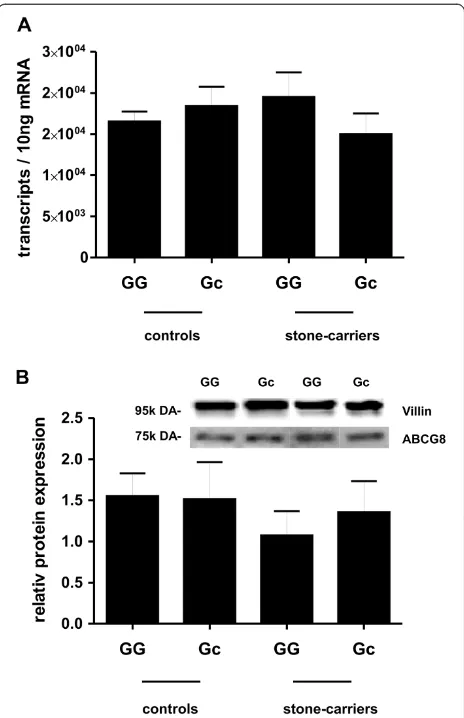Role of the ABCG8 19H risk allele in cholesterol absorption and gallstone disease
Full text
Figure




Related documents
Community-based learning experiences have been incorporated into residency training programs in an attempt to increase knowledge about access barriers in marginalized
R = Q/q R=represents the ratio between the weights of the carrier Q and the coating q material present in the formulation As soon as the optimum liquid load factor is determined,
IXshowed dorsiventral lamina, surface papilose, tomentose, unicellular, multiserrate, stelate or peltate; single layered epidermis with U-shaped thickened cells, wall breadth 10µ
We know paternal depression seems to affect 5% to 10% of fathers in the postpartum period, 5 that there is an increase in paternal depressive symptom scores in the fi rst 5 years
Abbreviations: DALYs, Disability Adjusted Life Years; EE, environmental enteropathy; GEMS, Global Enteric Multicenter Study; LMIC, low and middle income countries; MAL-ED, The
nigrum fruit make significant adverse effect on the testes weight, serum reproductive hormone profile and impairment of spermatogenesis in male rats.. Withdrawal of the
Separation protest was measured by the onset and duration of fretting or crying in 24 day-care and 28 home-reared infants during a two-minute period of isolated separation from
Use of the catholyte (negative fl uid AFP) orally two times a day in patients with grade 3–4 coxarthrosis early perioperative after TETS signifi - cantly improves the


